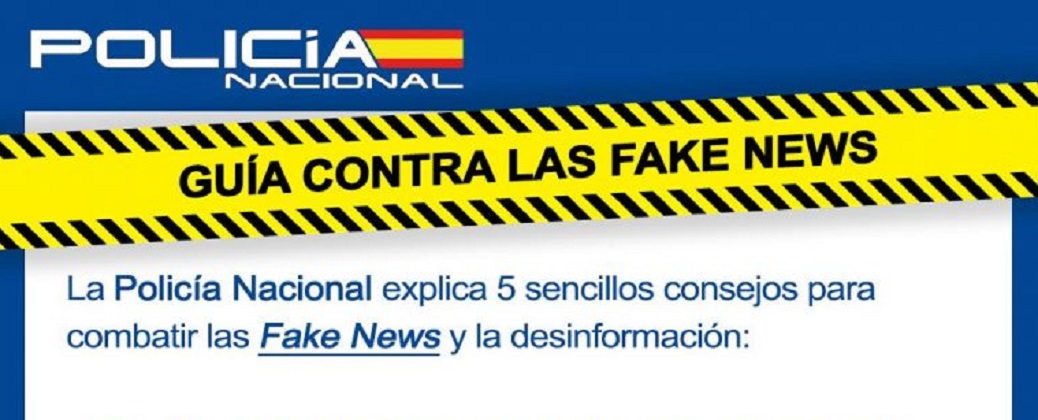National Police have presented the first guide ‘Shield your profiles against fake news’ to prevent citizens from being manipulated by false information, a tool to avoid being misinformed.
It is a guide with five simple recommendations available that helps you know when you are being faced with this type of news, so that you can identify them before giving them credibility and, more importantly sharing them on.
In Spain, millions use the internet to read news, but fake news or false news can be a real problem. The falsity of these messages, together with the rapid sharing of these messages and links, through social networks, can generate unnecessary alarm, discredit the image of a person, a company or institution, or manipulate the most gullible.
The Social Network team of the National Police receives more than 200 messages a day through, to which must be added more than 4,000 mentions a day. On the other hand, since 2014 it has been the most followed police profile in the world on social networks: on Facebook alone, the account of @PoliciaNacional already exceeds 700,000 followers. The feedback that it establishes with citizens allows these agents to have an extra source of alerts for detecting hoaxes and fake news.
So we must raise awareness about responsibility in fake news viralization
The responsibility for the dissemination of these false messages belongs to everyone. Each Internet user who forwards this type of content contributes to its viralization, with all that this entails. One of the objectives of its creators is to achieve a wide and fast readership. Raising public awareness of the importance of not participating in these misinformation chains is essential to avoid becoming victims of their manipulation.
To fight against misinformation and to encourage people to shield themselves from the fake news that may reach them, the National Police has produced a guide with five simple guidelines:
1. Know the source of the news : “Googling” the messages can give us a quick response on the reliability of their content. It can be old news, facts that have been exaggerated, or pseudo-news. Anonymous profiles or accounts are sometimes an indication that should make us suspicious. Sometimes it can also be robots; observing their activity and their followers you will be able to recognize them.
2. Contrast the news: going to other media you trust or official sources is the fastest way to get a second opinion. The links to other websites or official sources included in the news that justify the information reinforce its veracity.
3. Sometimes an image is not worth a thousand words: especially when it comes to screenshots or images that are used out of context or even manipulated. Photo retouching and image editing programs are a tool that fake news makers frequently turn to for the appearance of reality.
4. Identify sponsorships: remember that although the information cannot be considered strictly false, knowing who is the sender of the message or sponsor can help you find out if it is an opinion or true objective information. Always cross question or ask someone who can maybe help you.
5. When in doubt about its veracity, refrain from sharing it . Do not become a pawn of the creators of fake news and avoid being used to spread their false message. As alarming as the news sounds, first take a few seconds to think about whether forwarding this to your contacts is justified. That common sense is also the most common of the senses!




